WHAT ARE ARMS?
HOW IT WORKS
SCIENCE FOR SUSTENANCE
GLOBAL INNOVATION, LOCAL LEADERSHIP
Rebuilding Reefs, Reviving Communities

In Southwest Madagascar’s Bay of Ranobe, scientists and local fishers are joining forces to lead one of the most ambitious efforts in coral reef restoration Madagascar has ever seen. Through ARMS Restore, the Perry Institute for Marine Science (PIMS) and its partners are rebuilding coral reefs, restoring fisheries, and strengthening food security in a region among the most climate-vulnerable in the world.
Our approach to coral reef restoration in Madagascar is turning degraded reefs into thriving ecosystems; reviving marine biodiversity while supporting local livelihoods.
Our Impact at a Glance

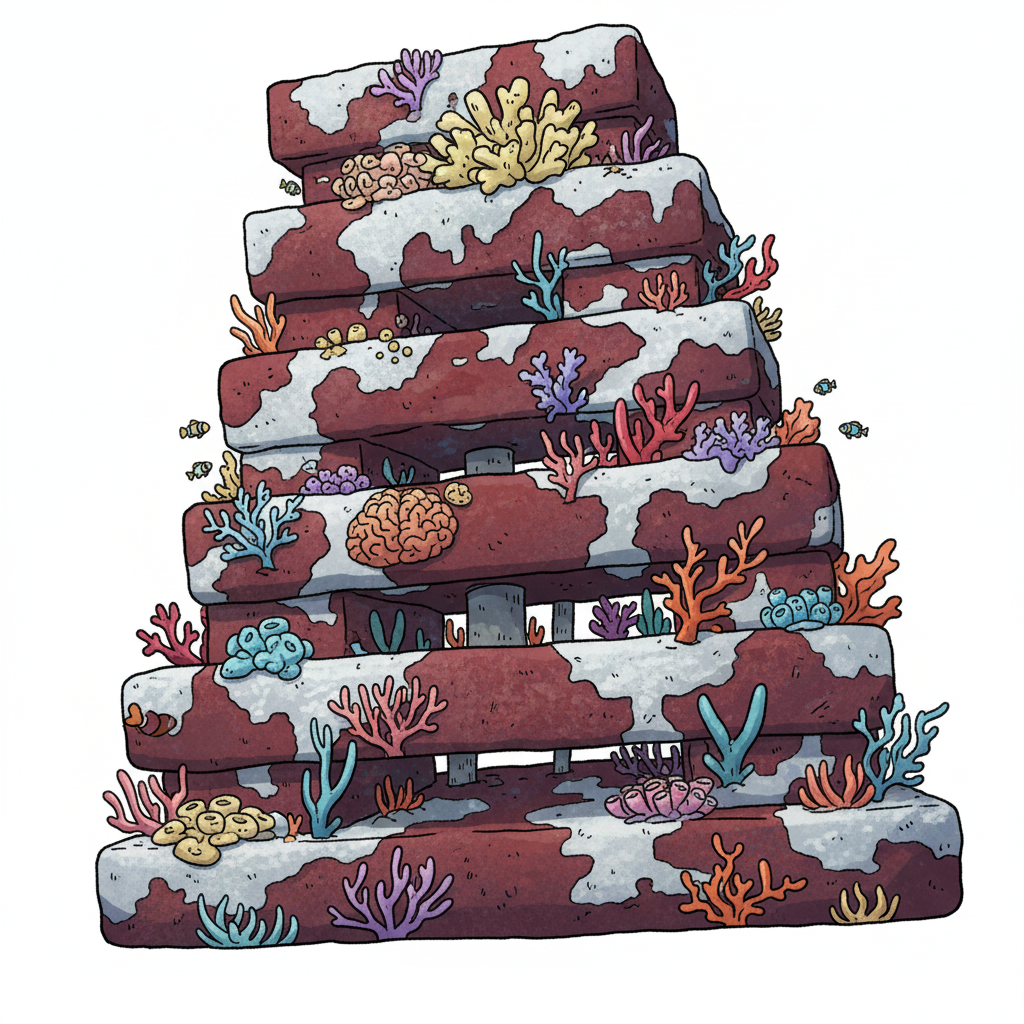
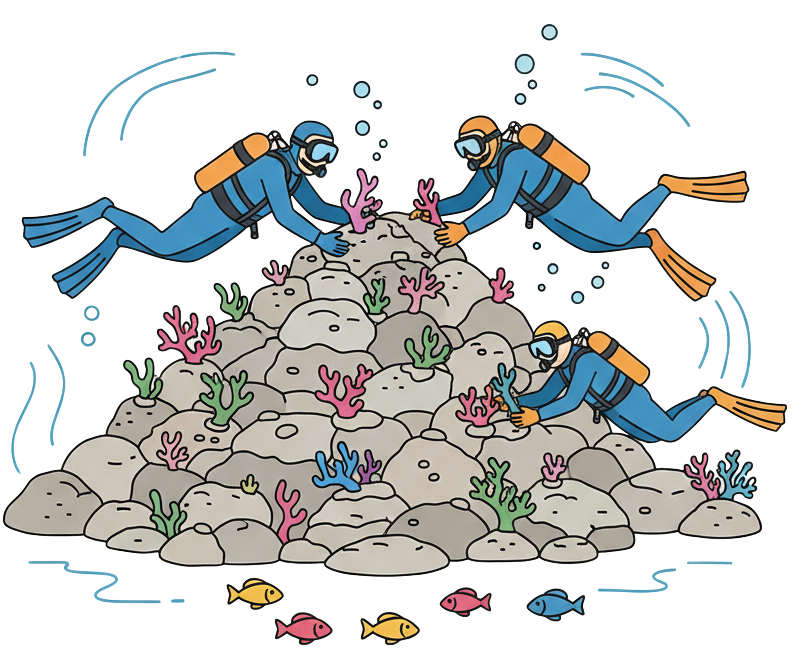
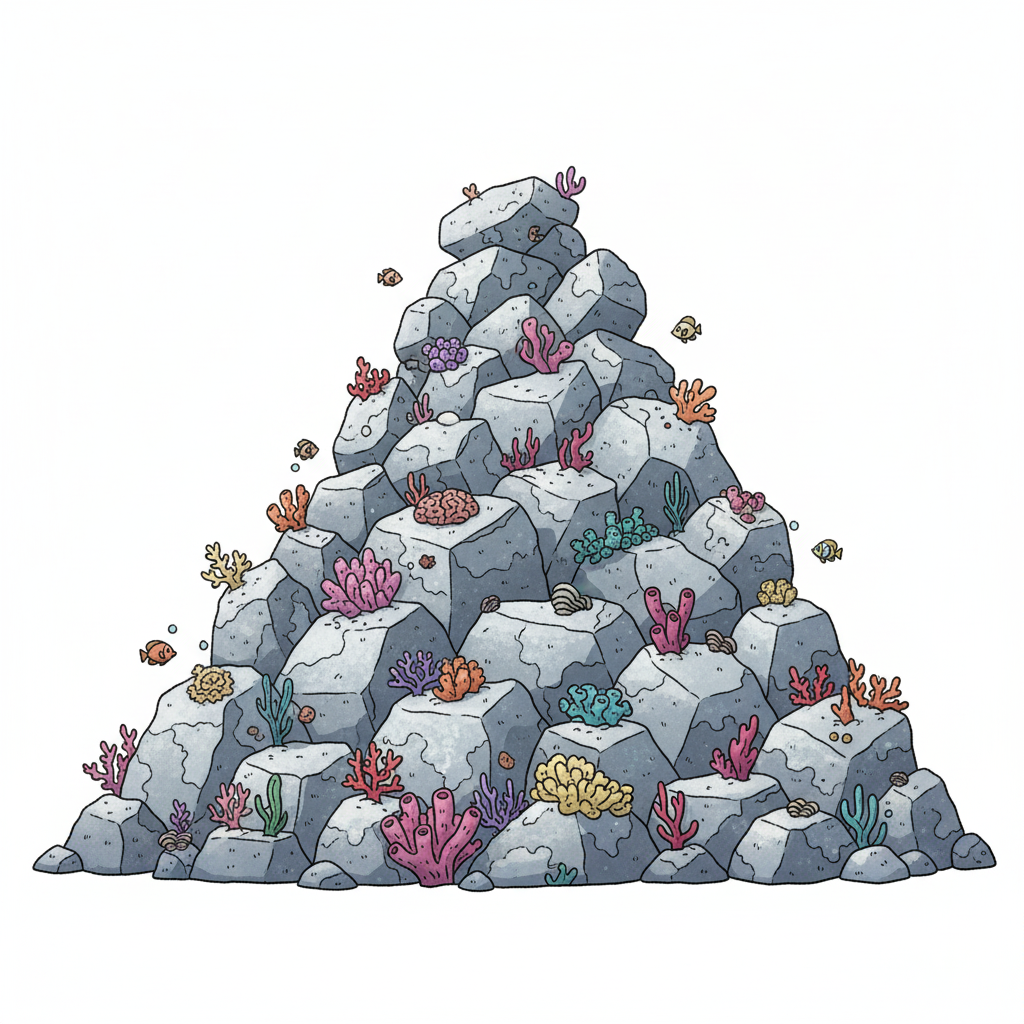
In southwest Madagascar’s Bay of Ranobe, our large-scale coral reef restoration effort is underway to rebuild lost reef structure and bring marine life back to this vital ecosystem. Working alongside ReefDoctor, IHSM, Coralive, and more, local teams are constructing artificial reefs designed to restore habitat for reef fish and corals and strengthen ocean resilience and food security in the region.
What Are ARMS?

Autonomous Reef Monitoring Structures (ARMS) are small, layered cubes made of local and natural materials, namely limestone, that replicate the natural structure of coral reefs. Initially developed to monitor biodiversity, they are now transforming the way coral reef restoration in Madagascar is done.
When ARMS are placed on healthy reefs, they naturally collect coral larvae, algae, invertebrates, and microbes; the living foundation of reef ecosystems. Once these ARMS are colonized, they are moved to artificial reefs built from locally sourced limestone. There, they seed biodiversity and jump-start the recovery of damaged reef systems, accelerating the success of coral reef restoration Madagascar projects.
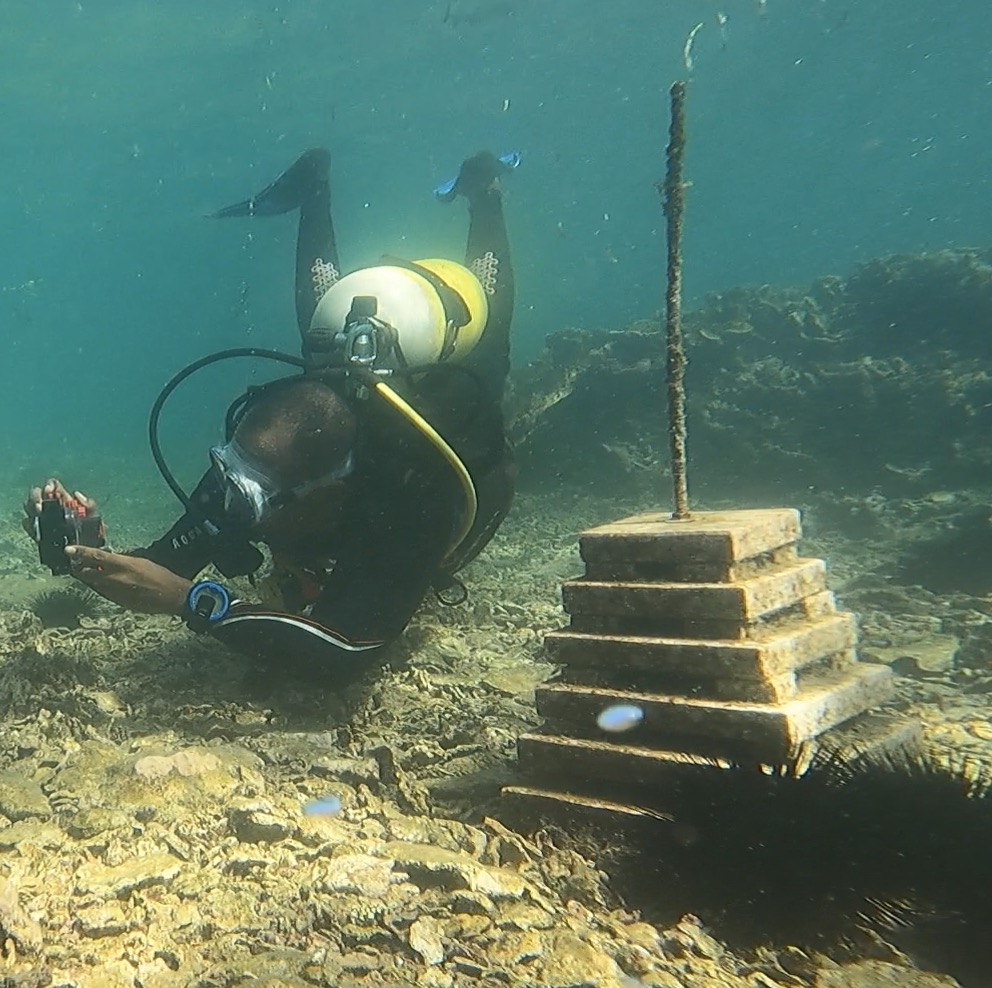
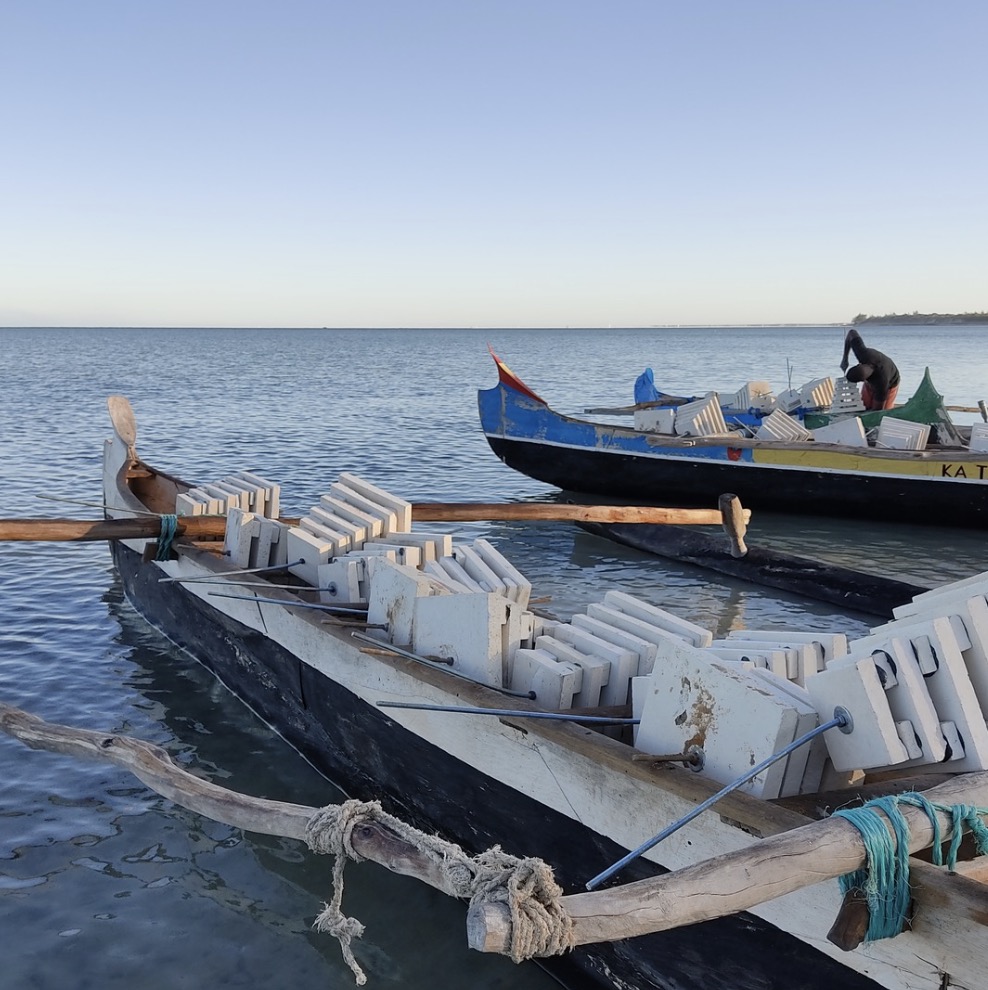
From Decline to Renewal

Across Madagascar, coral reefs have suffered decades of damage from overfishing, warming seas, and sedimentation. In the Bay of Ranobe, once-vibrant reefs now struggle to sustain nearby villages, where over 91% of families live in poverty and malnutrition rates are among the highest in the world.
ARMS Restore addresses both ecological collapse and hunger by rebuilding reef structure, restoring fish populations, and providing sustainable livelihoods. Each restored reef becomes a living source of protein, economic opportunity, and coastal protection, proving how coral reef restoration in Madagascar benefits both people and the planet.
How It Works

We deploy ARMS (Autonomous Reef Monitoring Structures) on healthy reefs to naturally gather coral larvae, algae, invertebrates, and microbes. These “living libraries” become the starter community for coral reef restoration in Madagascar.
Teams hand-build limestone reef spurs—50 m long, 2 m wide, 1.5 m tall—using locally sourced rock and small boats to transport materials offshore. The spurs provide strong, stable foundations for new coral growth and fish habitat.
Once ARMS are colonized, divers relocate and attach them to the limestone spurs. ARMS seed biodiversity, jump-starting coral settlement and attracting reef fish, which in turn accelerates coral reef restoration in Madagascar’s Bay of Ranobe.
Our scientists track progress with environmental DNA (eDNA), high-resolution photomosaics, and fish surveys. These data measure biodiversity, coral cover, and fisheries gains to ensure the restoration is delivering ecological and community benefits.
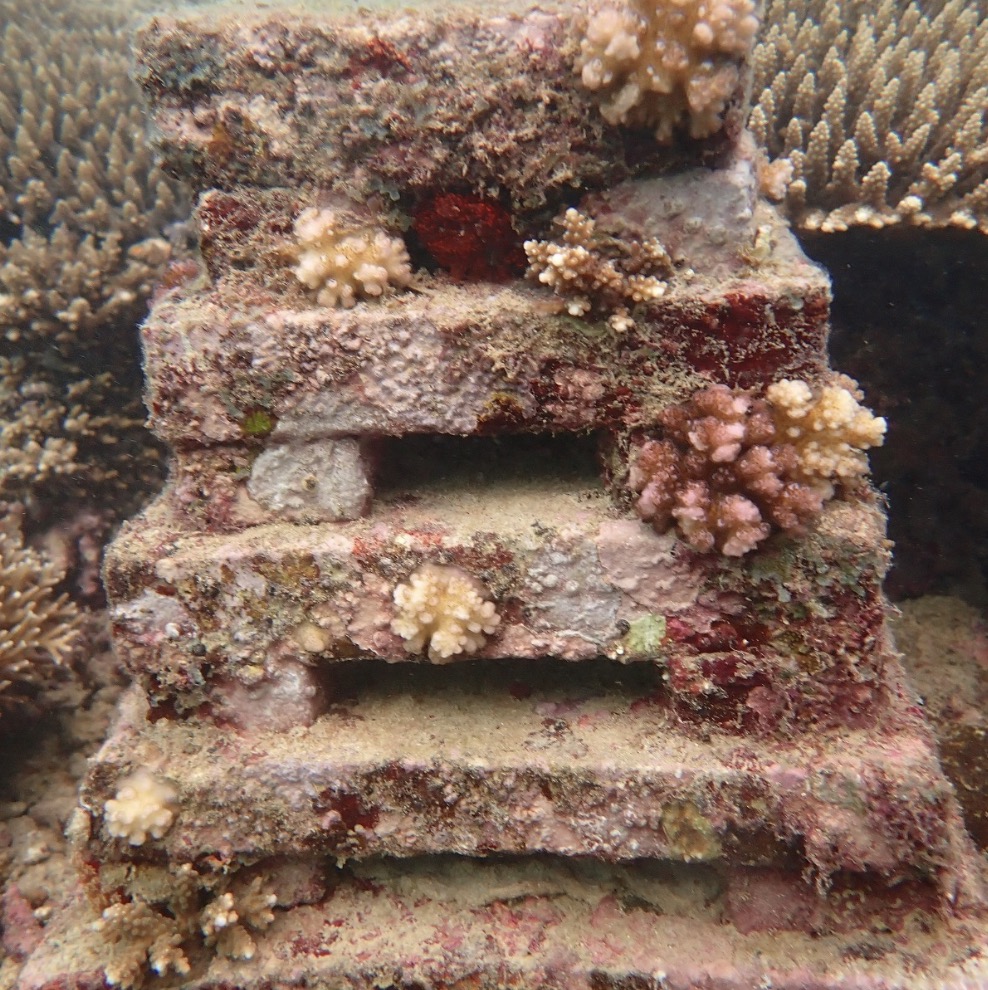
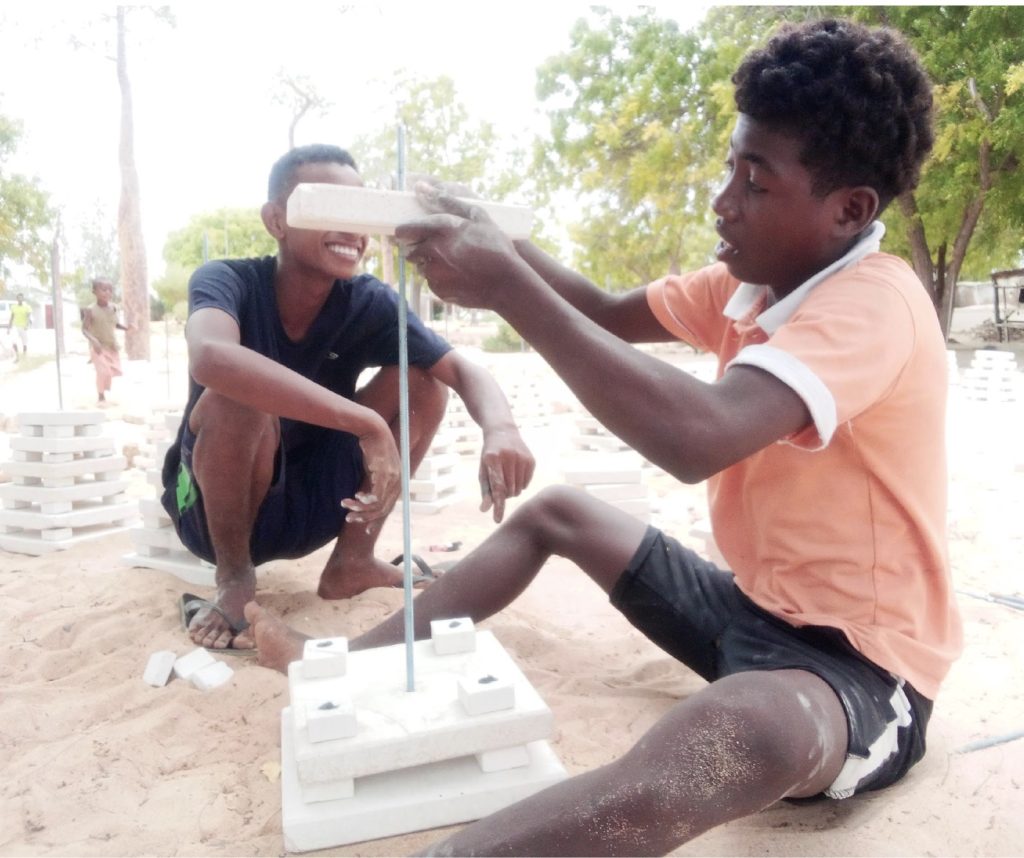
Science for Sustenance

Our coral reef restoration efforts in Madagascar link ecosystem recovery directly to human health. By measuring nutrition, fisheries yields, and community well-being, PIMS and its collaborators— ReefDoctor, IHSM (Madagascar’s Institute of Fisheries and Marine Science), Coralive Research Foundation, and more—are demonstrating how coral reef restoration can strengthen food systems and resilience.
Beyond reef building, the project supports sea-cucumber farming, seaweed aquaculture, and sustainable cassava cultivation, empowering families to diversify income, reduce fishing pressure, and enhance nutrition.
Global Innovation, Local Leadership

ARMS Resilience builds on the success of ARMS Restore, which first tested reef seeding in Madagascar. Now, ARMS Resilience expands this work beyond just reefs and fisheries to strengthen the food system as a whole. By combining the traditional knowledge of Vezo fishers and Masikoro farmers with modern marine science, this initiative embodies a Two-Eyed Seeing approach, merging cultural wisdom with scientific innovation. This partnership now informs a new decision-making framework guiding communities and policymakers toward sustainable strategies that balance reef health, food security, and climate resilience.
Every data point tells the same story: coral reef restoration in Madagascar works – for ecosystems, economies, and entire communities.
A Model for Coral Reef Restoration Worldwide
By linking science, food security, and community empowerment, ARMS Resilience is setting a new global benchmark for coral reef restoration Madagascar and beyond.
The lessons learned here are already being applied across the Indian Ocean and the Caribbean, from Madagascar to The Bahamas, helping nations design resilient blue economies grounded in restoration science.
About Our Lead Scientist

 Dr. Aaron Hartmann is a Senior Research Scientist at PIMS and the Principal Investigator for ARMS Restore and ARMS Resilience projects in Southwest Madagascar. A coral ecologist and restoration innovator, Aaron leads the science behind coral reef restoration Madagascar, integrating ARMS community-seeding, artificial reef construction, and crucial monitoring (eDNA, photomosaics, and multi-omics) to link reef recovery with fisheries and food security. He works closely with Vezo communities and partners including ReefDoctor, IHSM, and Coralive to co-design methods, train local teams, and publish data-driven insights that scale reef restoration across the Indian Ocean.
Dr. Aaron Hartmann is a Senior Research Scientist at PIMS and the Principal Investigator for ARMS Restore and ARMS Resilience projects in Southwest Madagascar. A coral ecologist and restoration innovator, Aaron leads the science behind coral reef restoration Madagascar, integrating ARMS community-seeding, artificial reef construction, and crucial monitoring (eDNA, photomosaics, and multi-omics) to link reef recovery with fisheries and food security. He works closely with Vezo communities and partners including ReefDoctor, IHSM, and Coralive to co-design methods, train local teams, and publish data-driven insights that scale reef restoration across the Indian Ocean.Watch:
Aaron's Webinar on ARMS & Reef Recovery

Partners

Institut Halieutique Et Des Sciences Marines (IHSM) at the University of Toliara (Madagascar) | ReefDoctor (Madagascar) | Perry Institute for Marine Science (USA) | Harvard T.H. Chan School of Public Health | Harvard Department of Organismic and Evolutionary Biology (USA) | Royal Swedish Academy of the Sciences (Sweden) | French National Research Institute for Sustainable Development (IRD; France)
Funders

Belmont Forum | United States National Science Foundation (USA) | Swedish International Development Cooperation Agency (SIDA; Sweden) | Swedish Research Council for Sustainable Development (FORMAS; Sweden) | National Research Foundation (South Africa) | Good Planet NGO (France) | French National Research Agency (France)
Research

Our research on coral reef restoration in Madagascar focuses on understanding how ecological recovery and community resilience are connected. Using tools like Autonomous Reef Monitoring Structures (ARMS), environmental DNA, and long-term reef monitoring, our scientists study how restored coral reefs rebuild biodiversity, strengthen fisheries, and improve food security. This research not only advances the science of coral reef restoration Madagascar but also provides data-driven solutions that can be applied across the Indian Ocean and beyond.
Stay Connected

Become part of our growing community dedicated to restoring coral reefs and protecting marine life. Subscribe for inspiring stories, research insights, job opportunities, and ways to get involved.
